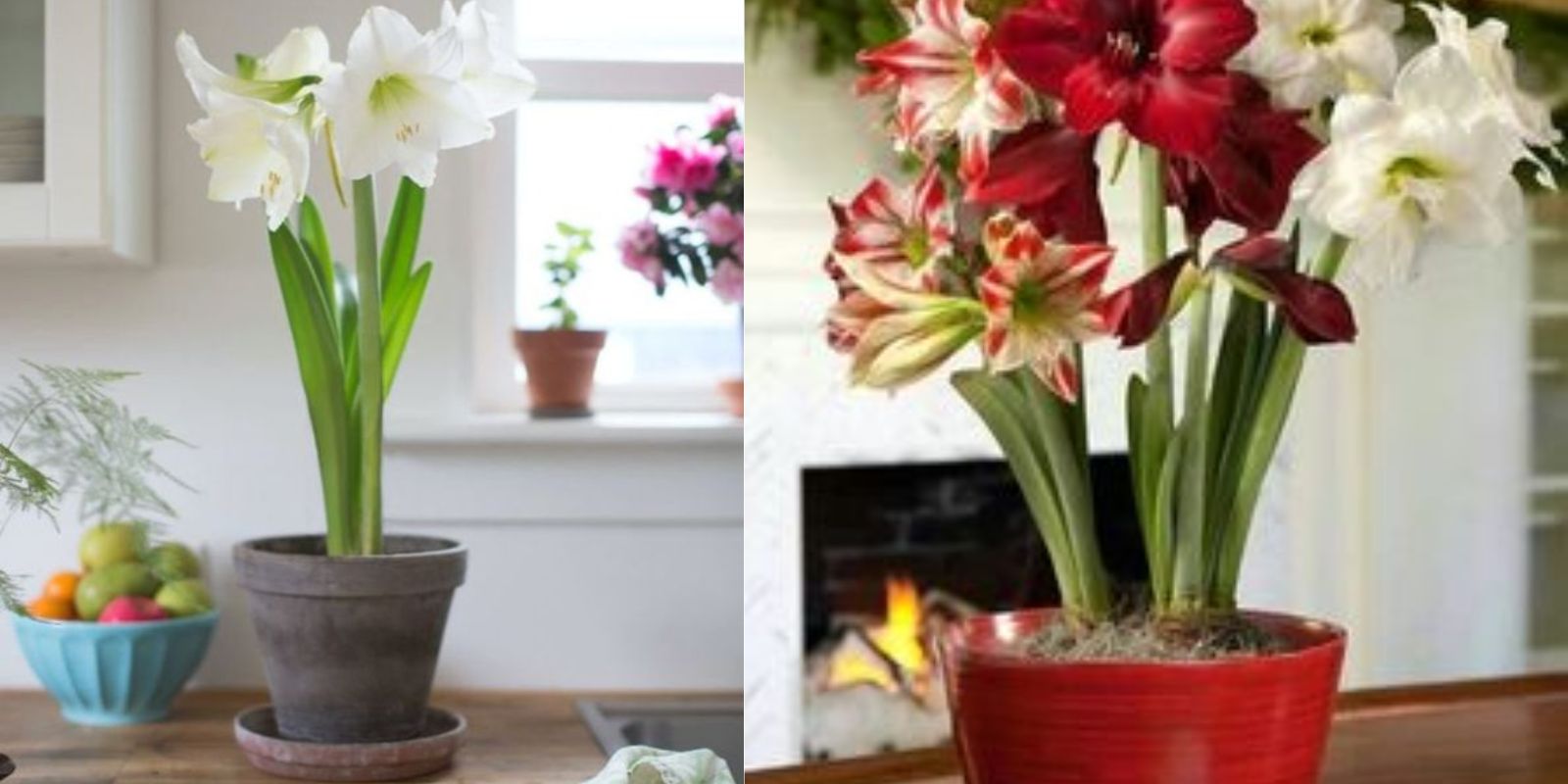Amaryllis, scientifically known as Hippeastrum, is a beloved bulbous plant famous for its large, vibrant blooms. These flowers are not only a visual delight but can also rebloom year after year with proper care. If you have ever wondered how to grow and encourage your amaryllis to bloom again, this article will provide a detailed guide on how to cultivate and rebloom this stunning plant.
Introduction
Amaryllis are popular for their ability to produce large, colorful flowers that can brighten any indoor space during the winter months. While many people believe that once the plant has bloomed, it is disposable, with the right care, you can enjoy its dazzling flowers year after year. This article will guide you through the essential steps to grow and rebloom your amaryllis.
Benefits of Growing Amaryllis
- Aesthetic Appeal: Amaryllis flowers are large, striking, and come in a variety of colors, adding a spectacular touch to any home.
- Easy to Care For: Unlike many other houseplants, amaryllis are relatively easy to care for and maintain.
- Annual Rebloom: With proper management, you can enjoy amaryllis flowers each year, making them a long-term garden investment.
- Adaptability: They can grow both indoors and outdoors, depending on the climate and conditions.
Step-by-Step Guide to Growing and Reblooming Amaryllis
Step 1: Selecting the Right Bulb
- Buy Quality Bulbs: Choose firm, healthy amaryllis bulbs without signs of mold or damage. Larger bulbs typically produce larger flowers and multiple flower stalks.
Step 2: Planting the Bulb
- Prepare the Pot: Use a pot slightly larger than the bulb with good drainage. Fill the bottom with well-draining soil, preferably a mix specific for bulbs.
- Plant the Bulb: Place the bulb in the pot with the pointed end up. Fill around the bulb with soil, leaving about one-third of the bulb exposed.
- Water Lightly: Lightly water after planting to settle the soil. Avoid overwatering to prevent bulb rot.
Step 3: Providing Light and Water
- Place in Bright Light: Position the pot in a location with bright, indirect light. Amaryllis need plenty of light to bloom, but direct sunlight can be too intense.
- Water Regularly: Keep the soil slightly moist, but not soggy. Allow the top layer of soil to dry out between waterings.
Step 4: Fertilizing
- Feed the Plant: Once the shoots start to appear, fertilize the plant every 2-4 weeks with a balanced fertilizer, following the product instructions.
Step 5: Post-Bloom Care
- Cut Back Flower Stalks: After the flowers have faded, cut the flower stalks back to 1-2 inches above the bulb. This helps redirect the plant’s energy back to the bulb rather than seed production.
- Continue Care: Keep watering and fertilizing the plant as usual, allowing the leaves to grow and strengthen. The leaves are crucial for photosynthesis, which nourishes the bulb for the next bloom.
Step 6: Allowing Dormancy
- Reduce Watering: After 6-8 months of active growth, gradually reduce watering to initiate the dormancy period.
- Let the Leaves Die Back: Allow the leaves to wither and die naturally, indicating the plant is entering its rest phase.
- Store the Bulb: Once the leaves are completely dry, cut any remaining foliage and remove the bulb from the pot. Store the bulb in a cool, dark, and dry place for 8-10 weeks.
Step 7: Preparing for the New Growing Season
- Replant the Bulb: After the dormancy period, take the bulb out of storage and replant it in fresh soil.
- Water and Provide Light: Water lightly and place the bulb in a bright location. Soon, you should see new shoots emerging, signaling the start of the new growth cycle.
Additional Tips for Success
- Pest Control: Regularly inspect your amaryllis for common pests like spider mites and aphids. Treat them promptly with organic methods or appropriate pesticides.
- Rotate the Plant: If the plant appears to lean towards the light, rotate it every few days to encourage even growth.
- Climate Suitability: If you live in a region with mild winters, you can grow amaryllis outdoors. However, ensure they are protected from frost.
Conclusion
Growing and reblooming amaryllis is a rewarding endeavor that can fill your home with beautiful flowers year after year. By following the steps outlined in this guide, you can ensure your amaryllis remains healthy and productive. From selecting the right bulbs to providing the necessary care during their growth and dormancy periods, each stage is crucial for success. With patience and attention, your amaryllis will reward your efforts with their dazzling beauty.
Motivation:
Ready to grow and rebloom your amaryllis? Start today and enjoy the beauty of these magnificent flowers in your home. Share your experiences and tips with fellow gardening enthusiasts and inspire others to try this easy and rewarding propagation method!

